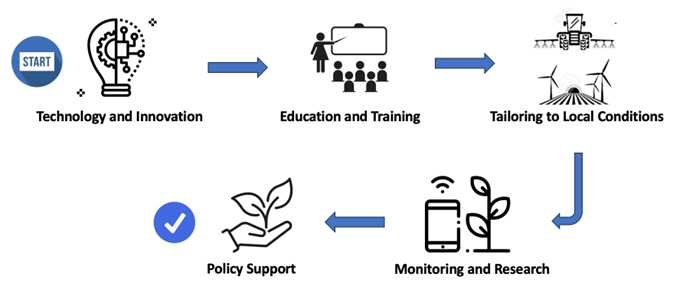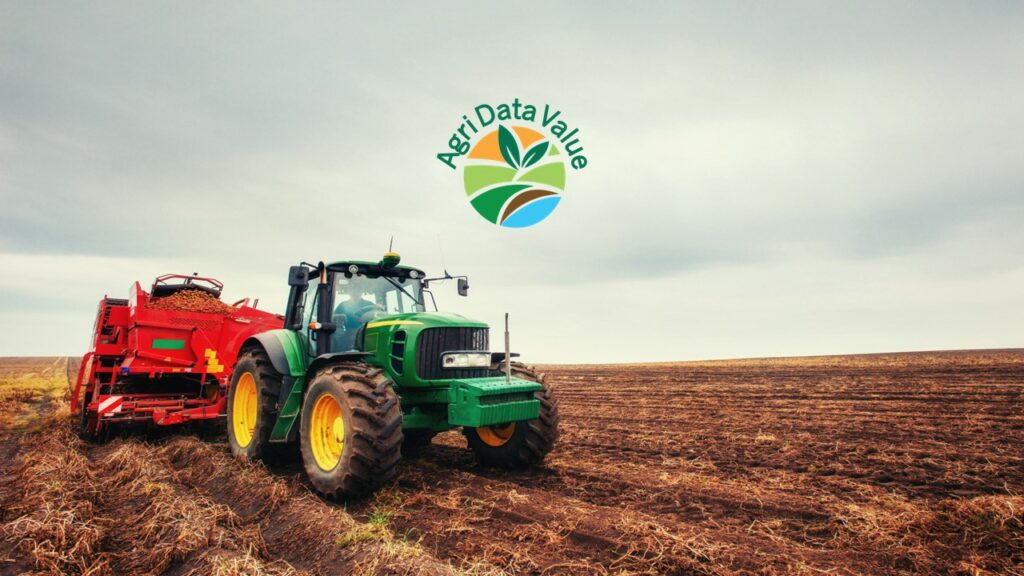Introduction
In modern farming, sustainability is a big concern. Traditional farming methods have sometimes caused problems like soil damage and harm to the environment. To address these issues, farmers have started using new ways of farming that are kinder to the land. Two of these methods are minimum tillage and strip-till, and they’re becoming more popular in conventional farming. They both focus on being gentle to the soil, saving resources, and making farming more sustainable. In this article, we’ll look at the differences and similarities between minimum tillage and strip-till methods. We’ll talk about how they help the environment, affect crop growth, what kind of equipment they need, and how they fit into the future of farming. Let’s dive into these new farming techniques and see how they might change the way we farm.
Minimum Tillage vs. Strip-Till: A Comparison
Both minimum tillage and strip-till are practices aimed at reducing soil disturbance and promoting sustainable agriculture (Table 1):

Discussion
In the realm of modern agriculture, the pursuit of sustainability has led to the emergence of innovative farming practices, namely minimum tillage and strip-till. These methods, driven by the desire to reduce soil disruption, conserve resources, and promote environmental well-being, have demonstrated their worth in the world of conventional farming.
Minimum tillage, with its gentler approach to soil management, stands as a valuable ally in the fight against soil erosion, soil degradation, and greenhouse gas emissions. By leaving crop residues on the field and tilling the soil less deeply, minimum tillage helps preserve soil structure and health while contributing to a more sustainable agricultural future.
Strip-till, on the other hand, offers precision in soil preparation. By creating well-defined tilled strips, it not only minimizes soil disturbance but also provides a favorable environment for crops to thrive. Improved weed management and the potential for increased crop yields underscore its role in sustainable farming practices.
Within the scope of the AgriDataValue project, the incorporation of advanced technologies such as weather stations and IoT sensors marks a significant leap forward. These devices will be installed in the field to collect comprehensive data on weather patterns and soil conditions, enabling precise adjustments to farming practices. The insights gained from this real-time data can lead to more informed decision-making, optimized resource use, and further advancements in sustainable agriculture.
As we look toward the future, it becomes evident that these practices have a vital role to play in the quest for sustainable agriculture. Here are some considerations for the road ahead (Figure 1):

1. Technology and Innovation: Continuous advancements in farming technology and equipment will likely enhance the efficiency and accessibility of minimum tillage and strip-till methods. Integrating data-driven solutions and automation can further optimize these practices.
2. Education and Training: Providing farmers with the knowledge and training required to implement minimum tillage and strip-till effectively is crucial. Outreach programs and support from agricultural institutions can facilitate the adoption of these practices.
3. Tailoring to Local Conditions: Different regions and crop types may benefit differently from minimum tillage and strip-till. Future strategies should focus on tailoring these practices to local conditions and crop needs.
4. Monitoring and Research: Ongoing research and monitoring efforts should assess the long-term impacts of these methods on soil health, crop productivity, and the environment. This knowledge will help refine best practices.
5. Policy Support: Government policies and incentives that encourage sustainable farming practices, including minimum tillage and strip-till, can play a pivotal role in their widespread adoption.
Conclusion
In conclusion, minimum tillage and strip-till farming methods offer promising avenues for more sustainable and environmentally friendly agriculture. The integration of IoT sensors, such as weather stations, into these practices enhances their efficacy by providing precise, real-time data. This data-driven approach allows for the optimization of resources and informed decision-making, which can lead to improved crop yields, reduced environmental impact, and cost savings. Embracing these practices, alongside continued innovation and support, holds the potential to reshape the future of farming for the better, ensuring that we can meet the needs of today without compromising the needs of tomorrow. The AgriDataValue Project exemplifies this synergy between traditional farming techniques and modern technology, setting a benchmark for the future of sustainable agriculture.
References
- Reicosky, D.C., and R.R. Allmaras. “Minimum Tillage Effects on Soil Carbon and Aggregate Stability in the Northern Great Plains.” Soil Science Society of America Journal, 2002.
- Blanco-Canqui, Humberto, and Richard B. Ferguson. “Strip tillage and nitrogen rate effects on soil carbon and nitrogen in irrigated continuous corn.” Soil Science Society of America Journal, 2013.
- Kaur, G., et al. “Environmental and economic benefits of no-tillage and strip-tillage practices: a review.” Renewable Agriculture and Food Systems, 2018.
- Wilhelm, W.W., et al. “Corn and soybean yield response to crop rotation and tillage.” Agronomy Journal, 2004.
- USDA Natural Resources Conservation Service. “Conservation Tillage.” (chrome-extension://efaidnbmnnnibpcajpcglclefindmkaj/https://www.ers.usda.gov/webdocs/publications/90201/eib-197.pdf)
- Sustainable Agriculture Research & Education (SARE). “Strip Tillage and No-Till for Vegetables.”


